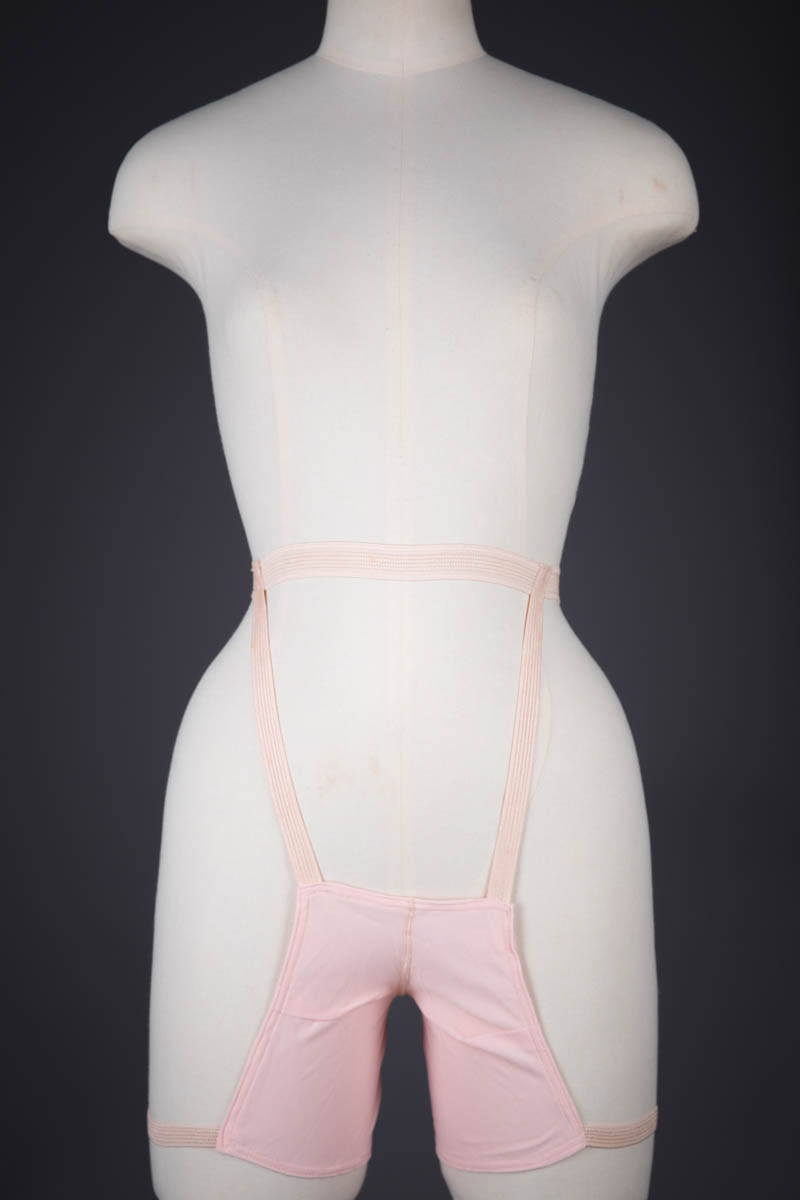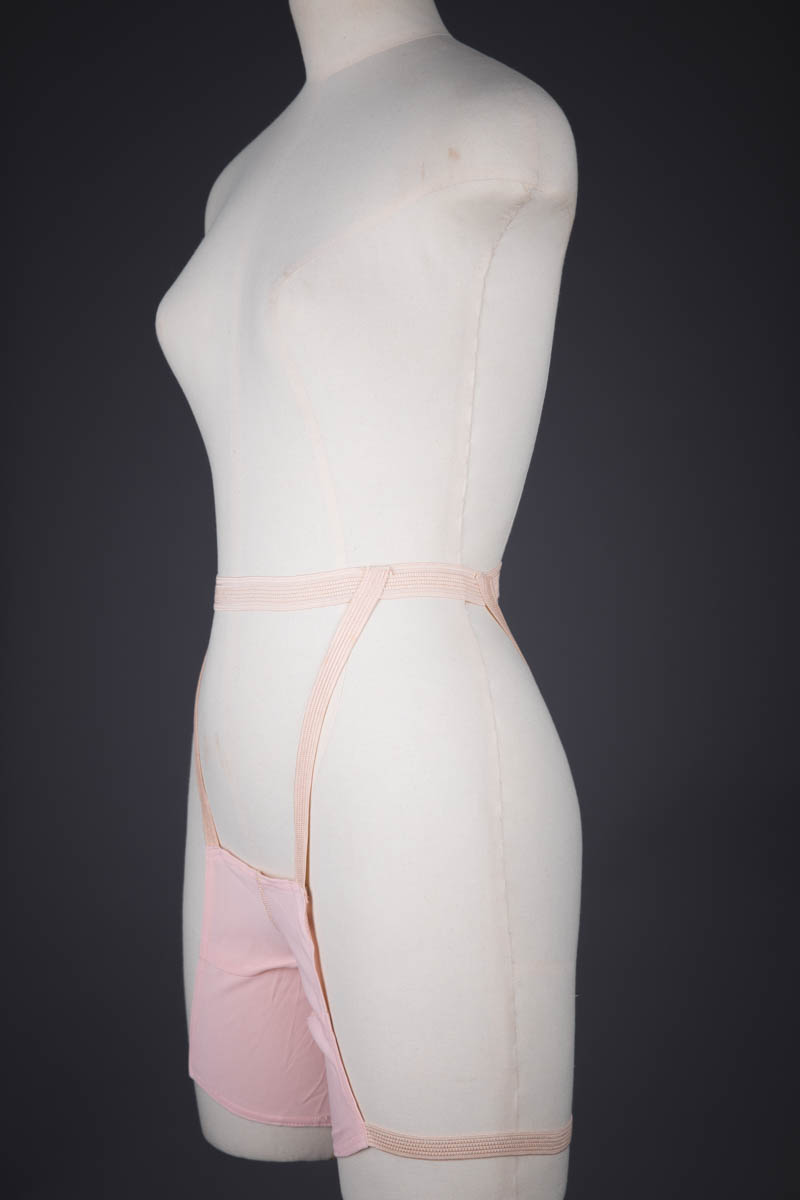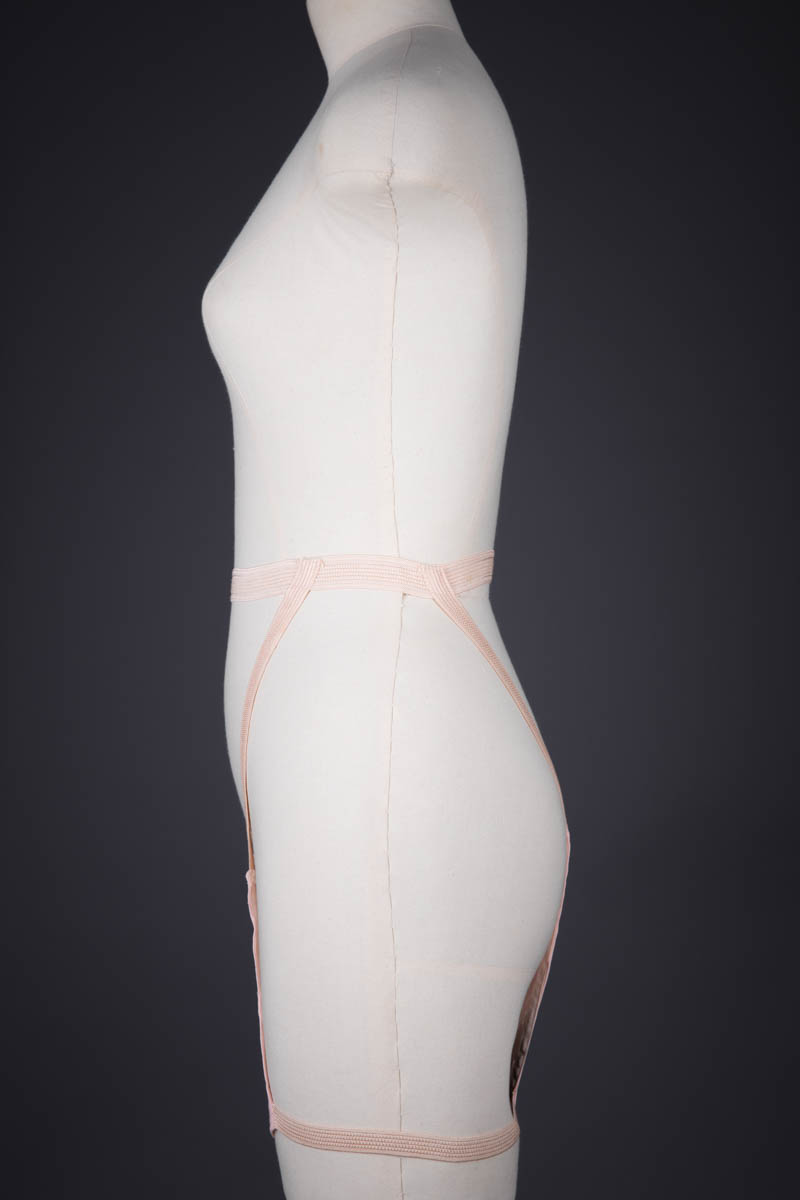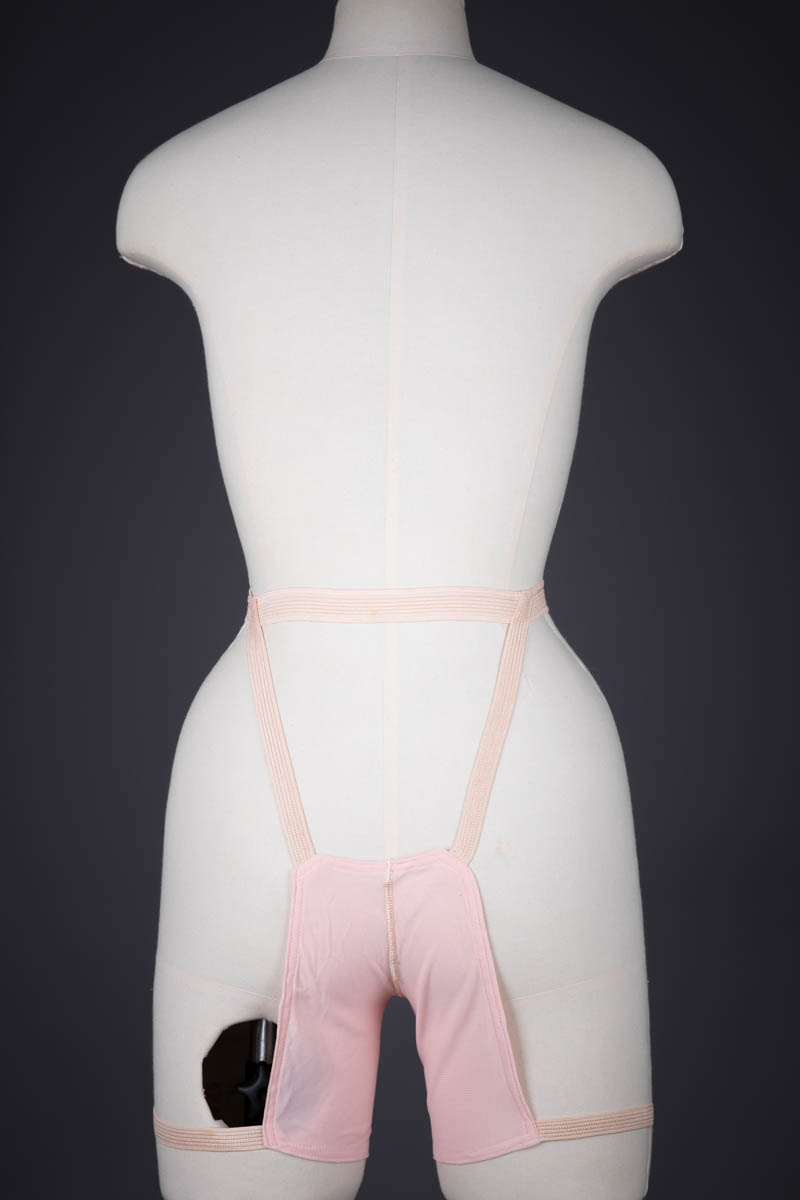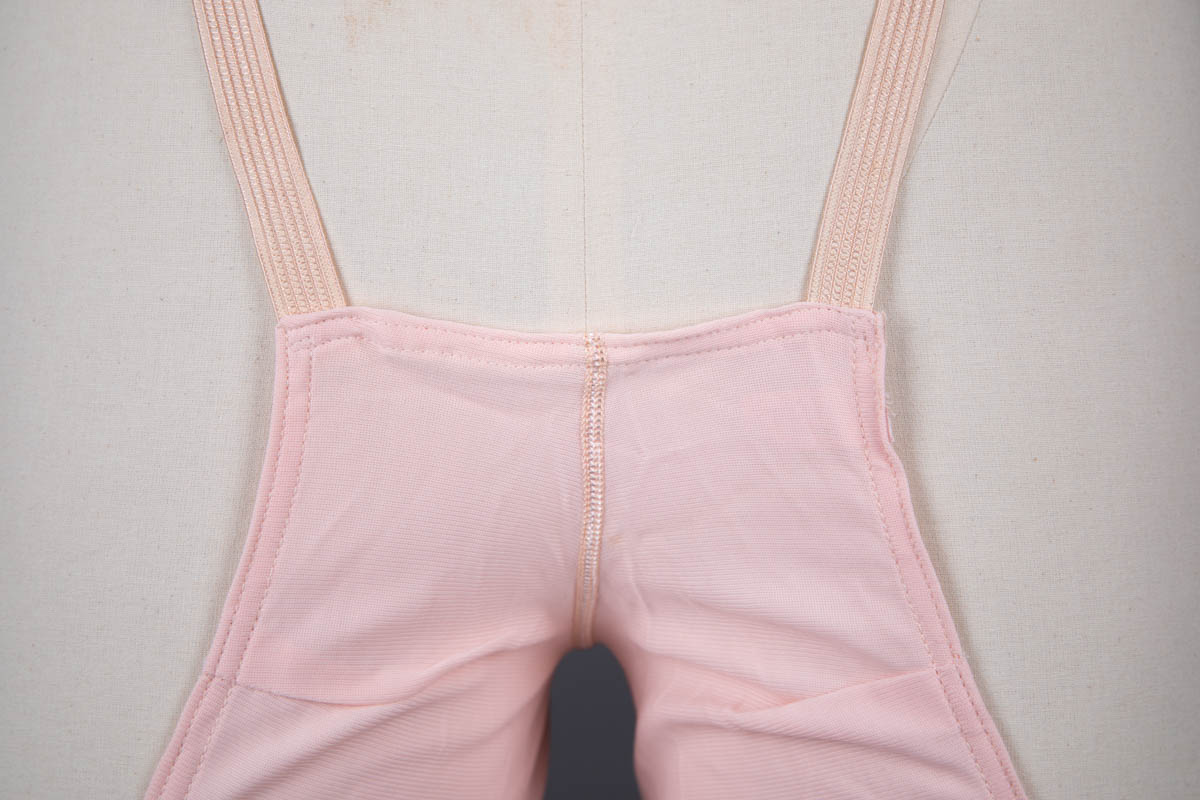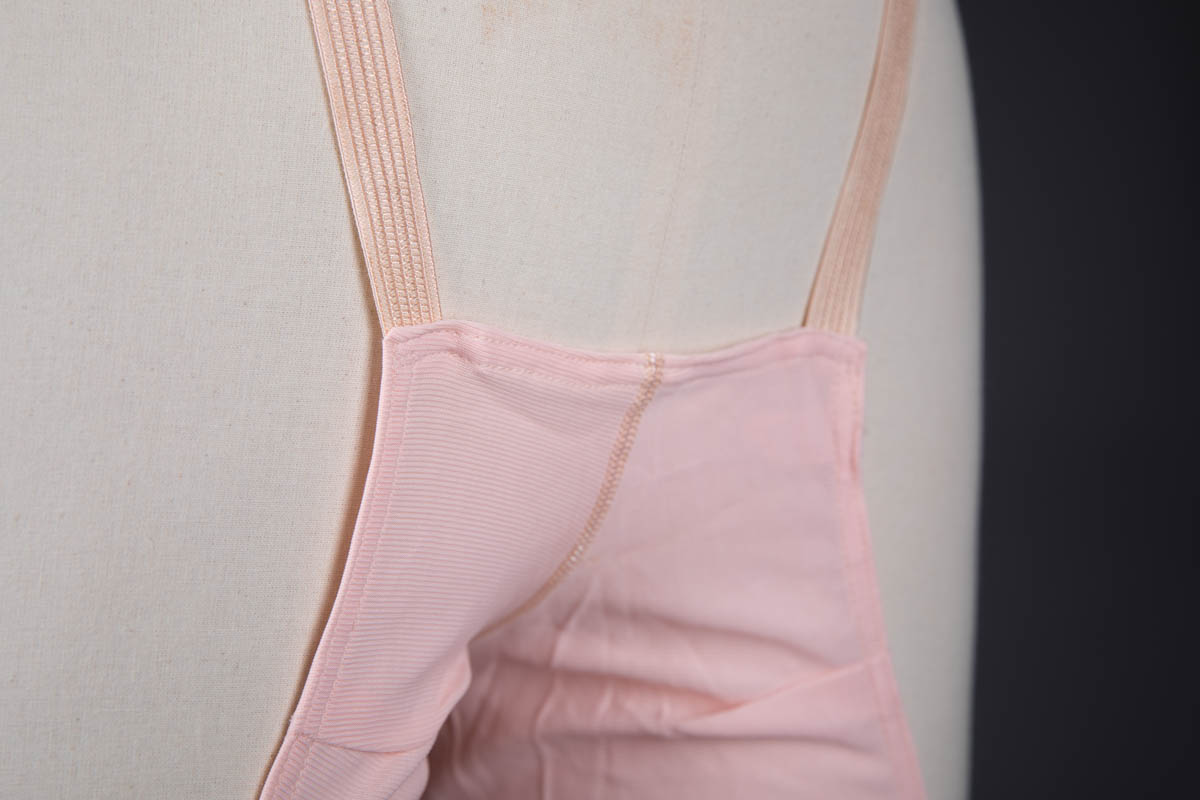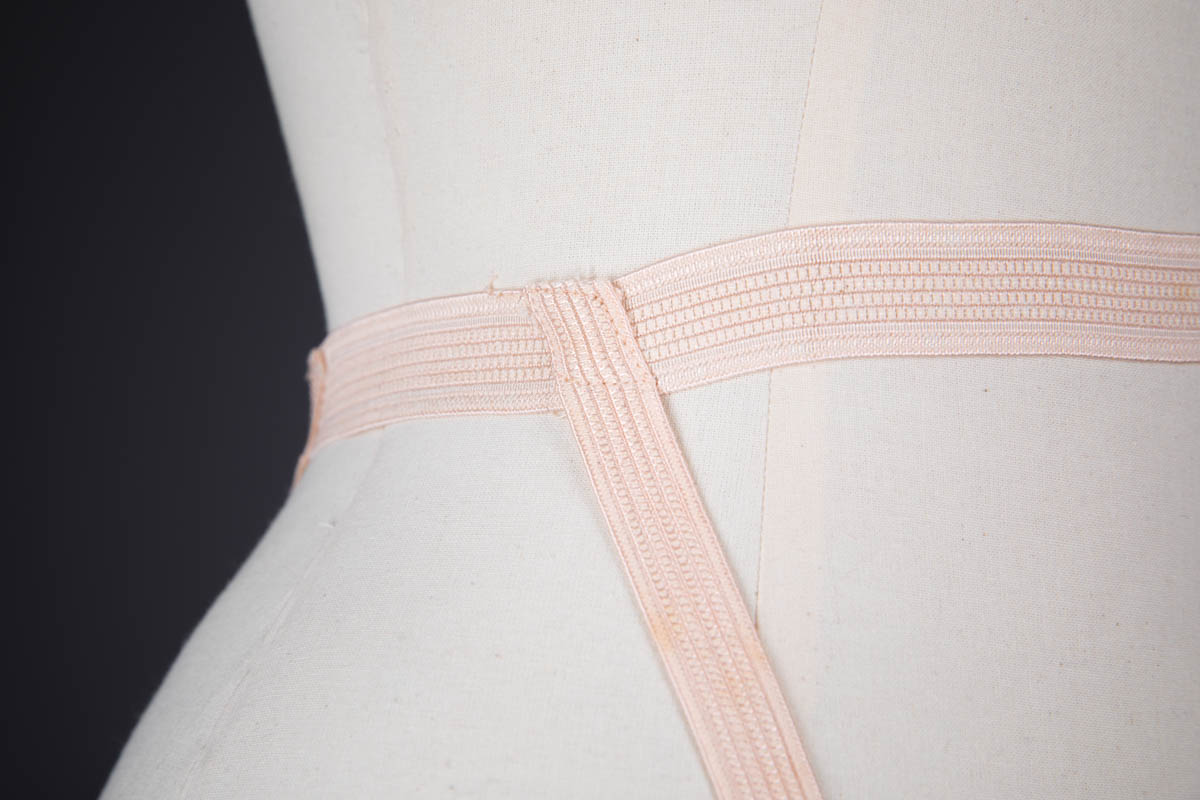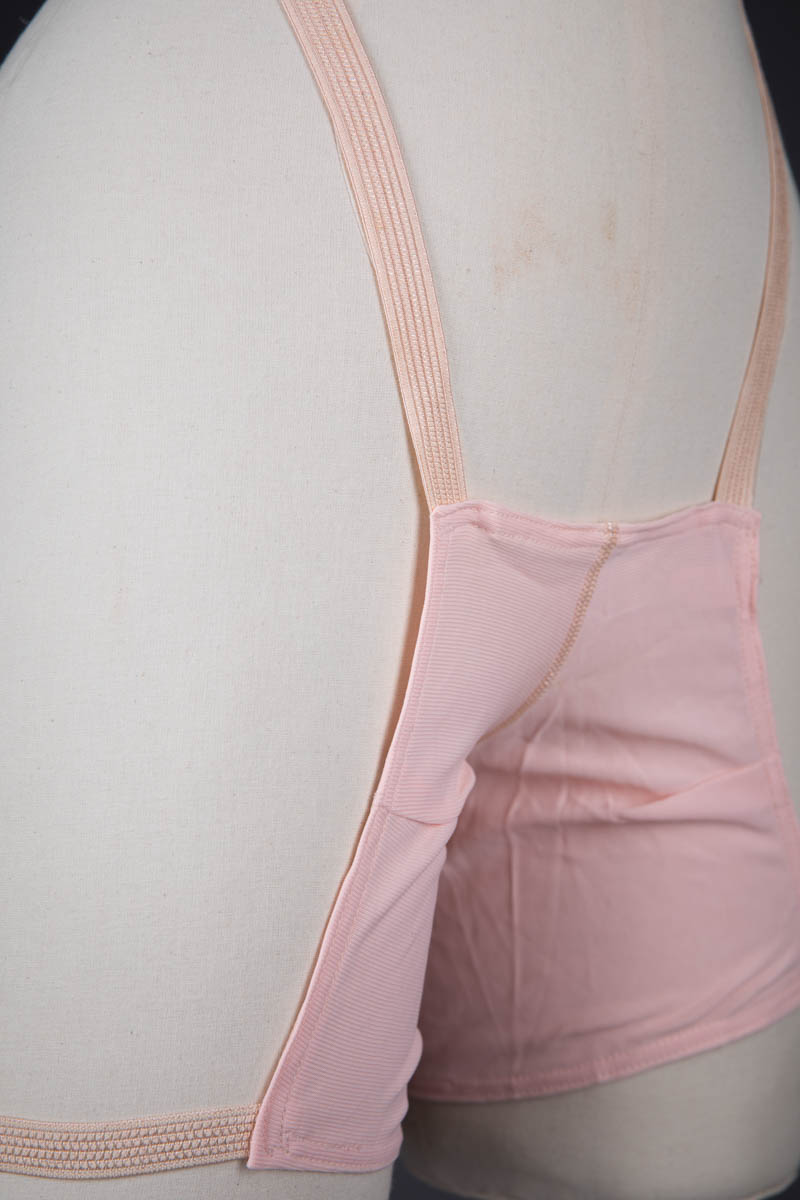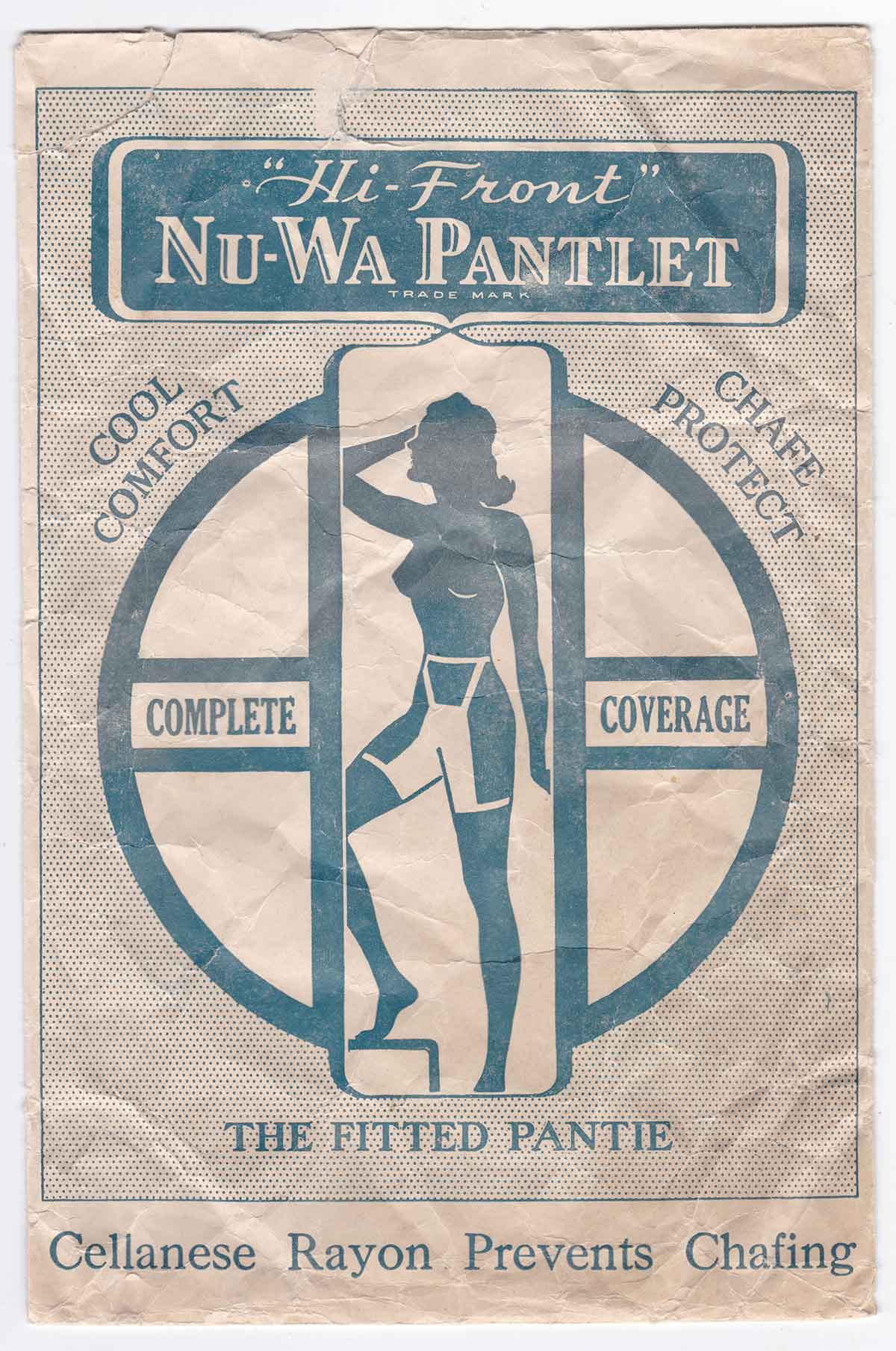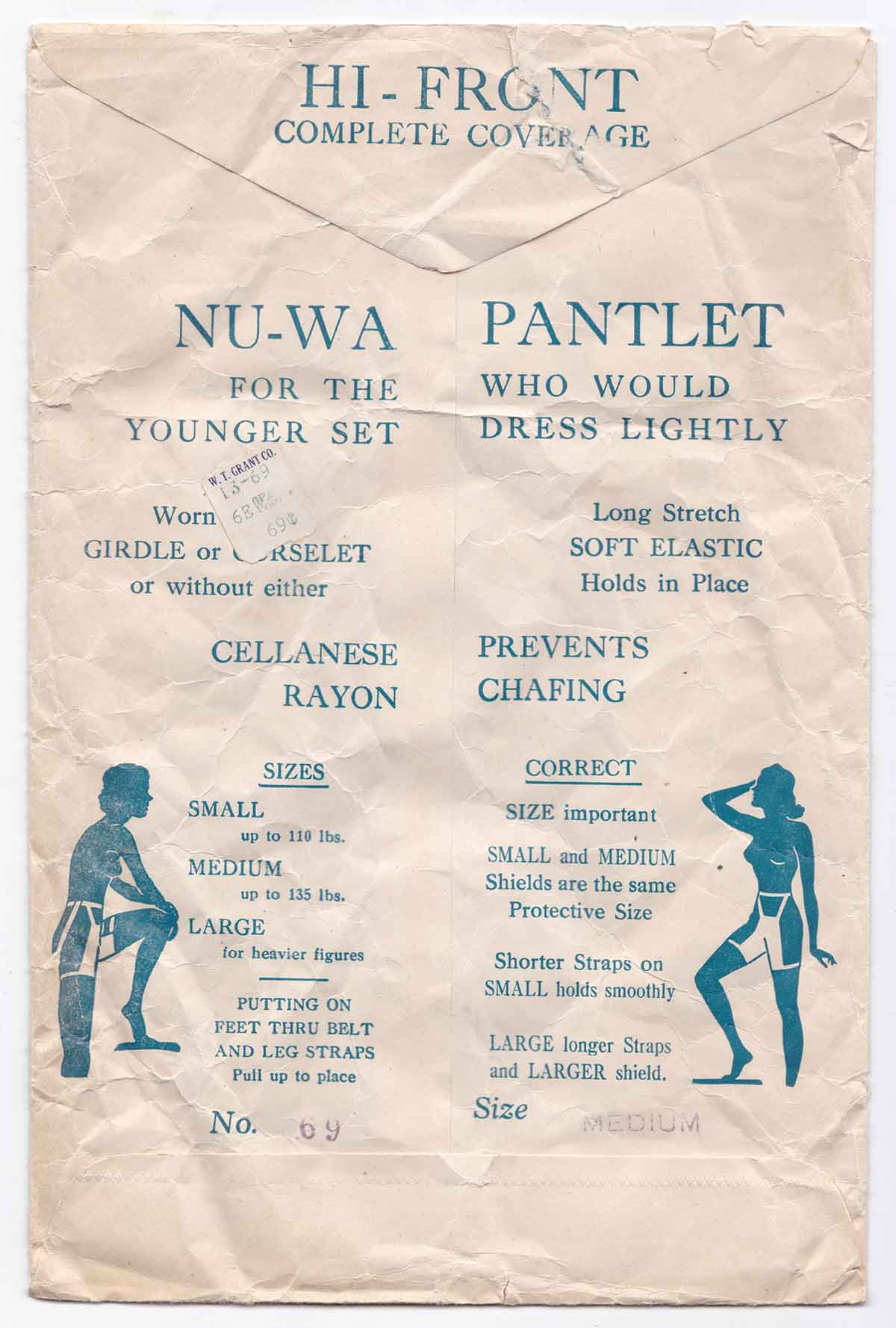Date: c. 1930s
Origin: USA
Fabric: Cellanese Rayon
Brand: Nu-Wa
A pair of cutaway knickers, intended to reduce chafing at the thighs, offering full coverage at the crotch and inner thighs whilst leaving the hips uncovered. The garment body is made of a stretch rayon jersey that has been overlock stitched, allowing the garment to stretch without the risk of broken stitching. Elastic strapping secures the fabric to the body by anchoring it at the waistline and thighs with cage style strapping.
The use of entirely stretch fabrics in this design would have been relatively unusual at the time, and offered an unprecedented freedom of movement to the wearer. The garment is also unusually fitted to the body, as most undergarments of the period were the loosely cut ‘tap pant’ style. The target market for this design was young women, with the packaging referencing ‘…the younger set who would dress lightly’. The packaging also notes that the style can be worn with or without additional foundationwear, and gives instructions on how to dress in the style.
Celanese was a type of branded rayon produced by the company British Celanese (the name comes from a contraction of ‘celluloid’ and ‘ease’; rayon is a cellulose based fibre). Celanese was marketed as an affordable and easy to care for alternative to silk. The packaging of this garment refers to ‘Cellanese’, which suggests that the branded fibre was not actually used, but the designers were still hoping to take advantage of brand recognition to boost the sales of their product.
From the collection of Karolina Laskowska

